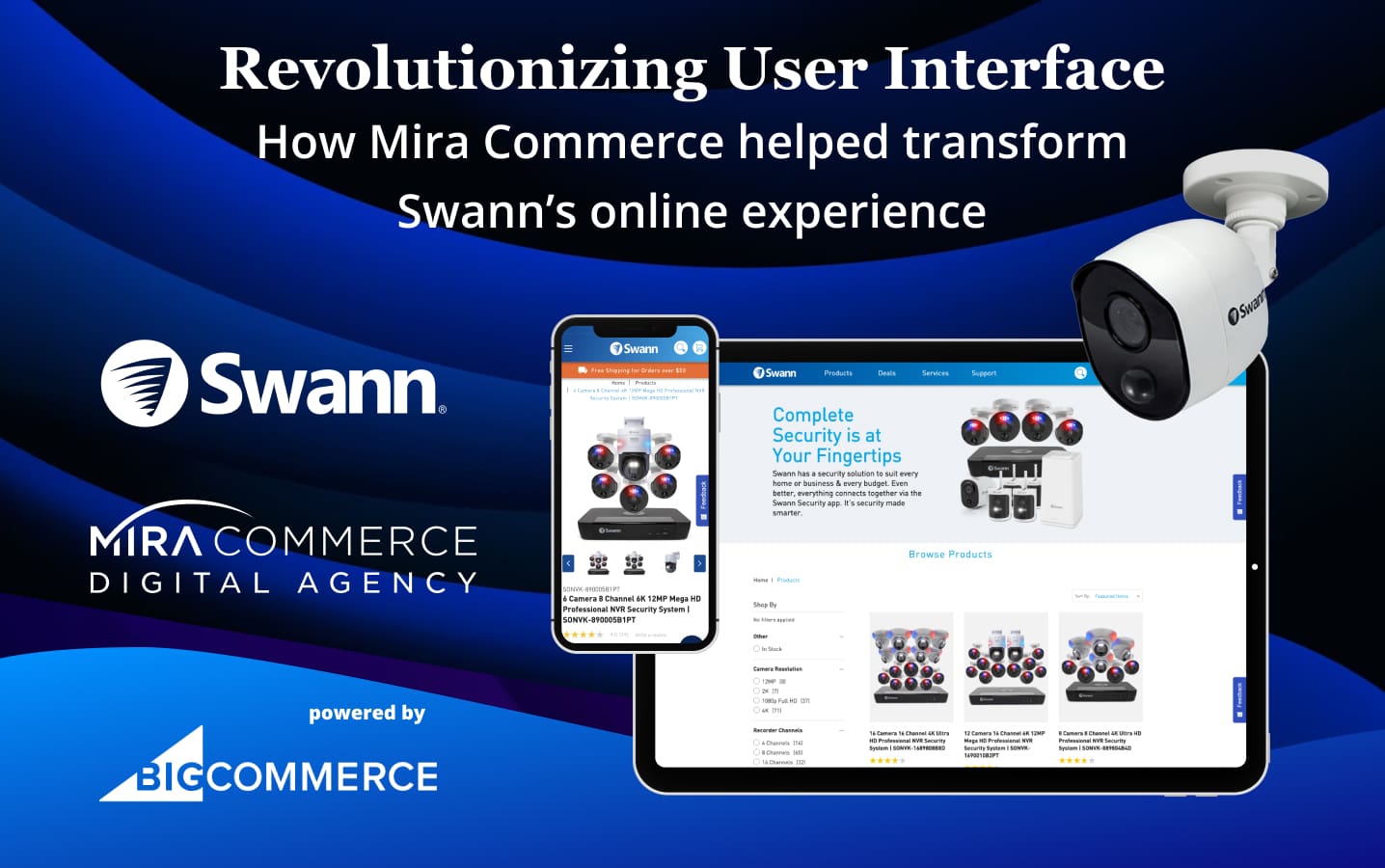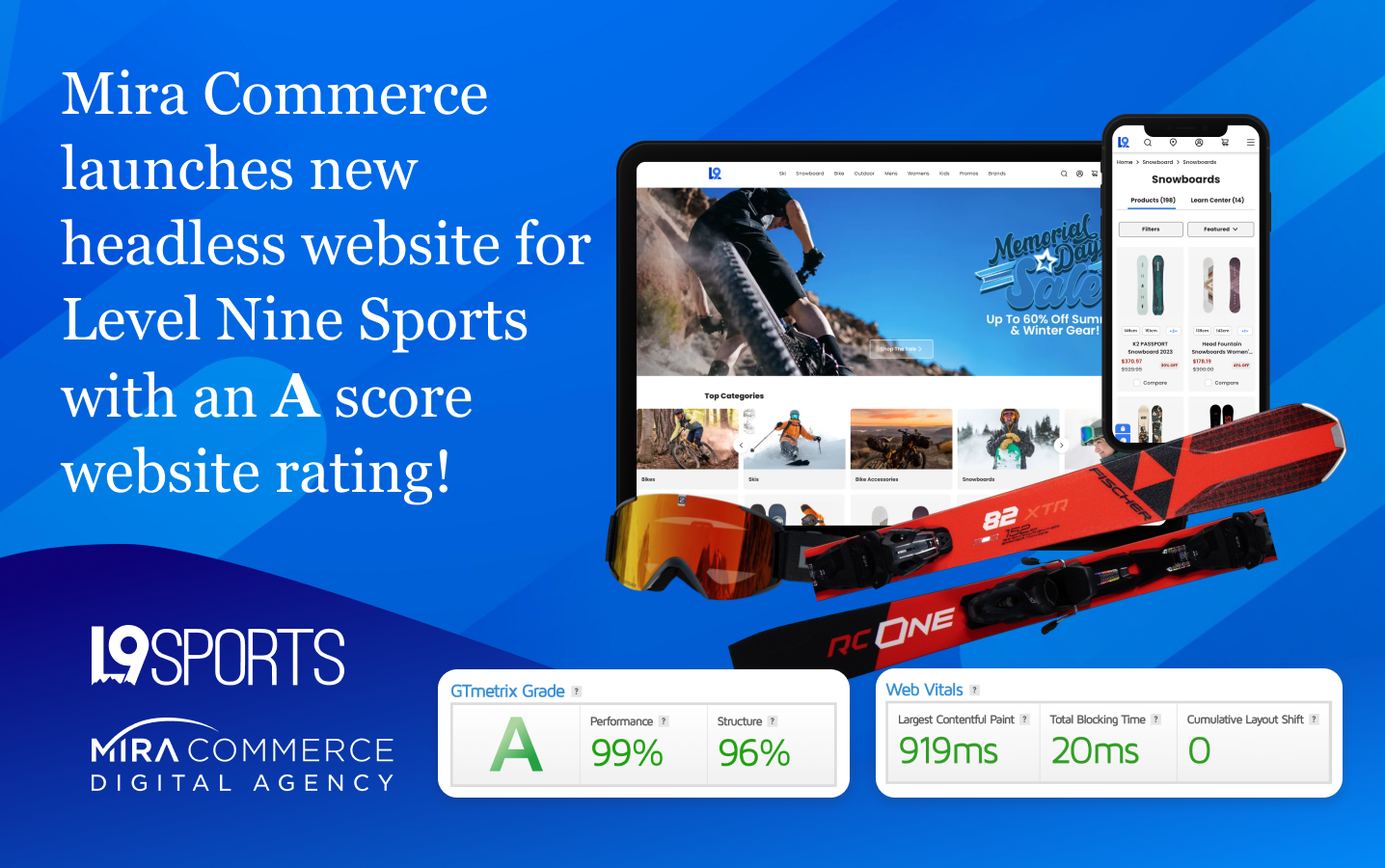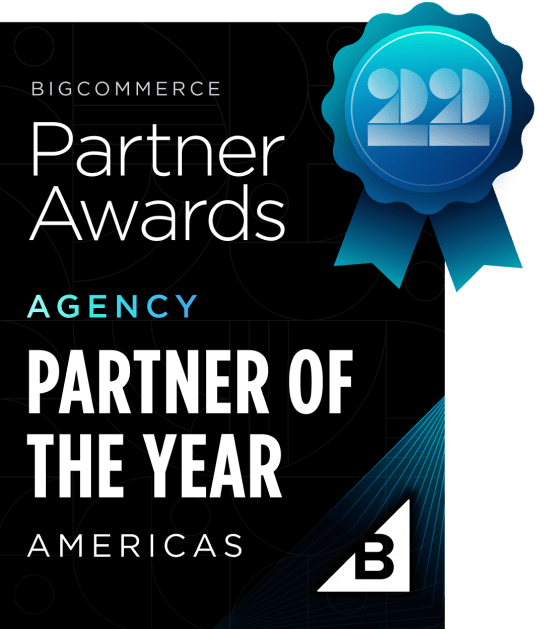On February 19, 2019, DEPLABS’ strategic partner Kibo, a leader in cloud commerce, and Certona, the leading real-time omnichannel personalization solution and pioneer of AI-driven experience individualization, announced they are joining forces. KIBO and Certona issued a joint press release saying that “…by coming together, (we) are combining a robust cloud commerce platform, comprised of both eCommerce and order management solutions, with a best-in-class personalization platform. As the market becomes more dynamic and competitive, retailers need individualized ways to build loyalty, drive sales, and streamline their business. The combined company represents a milestone for the future of digital commerce – putting personalization of the customer journey front and center for retailers while also providing flexible, innovative cloud-based commerce solutions.”
The news were announced right before eTail West trade show and we got a chance to speak with Certona’s co-founder and CEO, Meyar Sheik, who shared Certona’s unique story and his vision for personalization in commerce, giving his view on the Kibo deal potential:
SO: Meyar, thank you for agreeing to talk about Certona here at eTail West. You stirred up quite some news two days ago with the Kibo deal announcement; congratulations on that deal! Let’s discuss Certona’s journey to-date, its outlook for the joint future with Kibo Commerce and your vision for the personalization evolution in commerce. Starting from basics, what is your elevator pitch for Certona when talking to a potential retail customer?
MS: Sure. An extremely short one is: “We help you sell more stuff!” But really, we have this real-time personalization platform that uses machine learning, AI and algorithms to predict shoppers’ intent and understand individual behavior and affinities to put the right product offers, content and experience in front of a shopper, and stay two steps ahead of them, thereby increasing conversion, average order value and basket size.
SO: You have been in this business for years now; is the pitch of yours different from, say, five to 10 years ago – or do you find that most companies still need the basics to “get on the train of personalization?”
MS: It’s a good question. I actually went back and reviewed our PowerPoint decks when we were a four-person startup in 2004. The slides weren’t as professional, but this core message has not changed. The only thing that changed in these past 10 years is the advent of mobile. But even in our early amateur presentations, we had a little picture of a phone there. Back in 2005 it was pre-iPhone so no one had even fathomed that mobile commerce would be so pervasive and our phones would be so powerful and functional. Other than that, we always assumed there would be a physical store with customers, not just a digital native, but a functional brick-and-mortar channel. We also saw that emails needed personalization; we even have some customers that use us to personalize their call center engagements.
SO: Expanding on the competitive side of things – there is so much noise around us here at the eTail West. The word “personalization” is inflated, every other vendor has “personalization” in its offering, but for the most part, most vendors’ understanding of the term is quite shallow. However, when you compete against credible market players in this field, what is your edge?
MS: We are different across several core aspects from everyone else, and then, depending on the competitor, we have a more fine-tuned messaging. You are right; it’s noisy. And as a pioneer, early mover in this space, we get additional friction in our sales as well as with existing clients. We say personalization is many things to many people, but at the core, it’s about your shoppers’ experience.
The message is that your customers and your brand – those are your biggest assets. So, the technology solution that connects your shopper AND your brand – you don’t want to short-change that or trust just anybody with it. If I have a fever, I might go to a general practitioner. But if I think there’s something wrong with my heart, I’m going to see a specialist. For most of our clients, we’re driving 10 to 20 percent of their GMV (gross merchandise value, or gross online sales) through our platform. So not only should they take that revenue seriously; it’s also a significant part of their customer experience. Our 15 years of market experience, our customer logos and base are second to none in terms of quality and quantity and size and breadth. Add to that a wealth of best practices that our support and client services team has accumulated over many years!
Beyond our experience, our 13 patents and status as the pioneer of neural networks and predictive analytics further set us apart. Our customer support model is extremely important as well because it’s why we have a 90 percent-plus retention rate — even in this crowded market. Technology is one thing, but a whole team behind you, holding your hand and being a good partner, not nickel-and-diming-you and not shoving SOWs every time something needs to get done; that’s key. We don’t put blame on other players in our customer’s stack saying, “It’s their fault.” This has been our DNA, and I always told my team: We have to play with platform vendors, and email providers, etc.; if there is an issue, try to fix it, own it, and then let’s do a post-mortem.
I met with a current prospect who is about to move to Shopify Plus from another platform. The person came to our booth and asked for his former Certona account manager at Speedo. He told me that he loved working with her, and asked us to work with her again as part of the new deal. That’s what you want to hear about your client services team and that is music to my ears!
SO: Totally agree with you on the critical importance of that, Meyar. It’s foundational.
MS: But see, Sergei, it gets lost in the mess of buzzwords, AI this, personalization that. Everyone is “buzzword-compliant,” as I say.
SO: OK, let’s explore that vector. What do you think about commoditization of personalization platforms? There are well-funded players out there who position themselves as OEM, plug-and-play, likes of Machinify.com. They claim that you can feed any and all data sources into their algorithms and that their data scientists will ensure you get meaningful real-time insights from it. It’s rapidly shifting to a domain-agnostic self-service model, where a platform setup is as easy as a series of Q&A configuration steps. Is that a threat to your business model?
MS: It’s a valid question. Yes, the state of the industry has evolved massively over the last 10 years. Our algorithms are always about self-learning and self-optimization. I think it will get to the model you describe in 10 to 15 years from now. But let’s remember that the businesses and brands are unique. And part of their thinking of why they choose Certona or other vendors is wanting to differentiate themselves. What happens if everyone is using the same utility?
SO: But won’t you agree that 80 percent of typical platform implementation work is mostly the same, using the same toolkits and algorithms?
MS: Yeah, but you have to look beyond just an algorithm. For example, it’s been a couple of years since Google and Amazon published their APIs for product recommendations. We partner with Google and use Google Cloud in one of our big customer’s ML (machine learning) scenarios, and we bring Google ML into our platform to operationalize it. Even that great algorithm, you still have to test it; you have to deploy it, measure it, modify it with business rules and get reporting on its efficacy. We’ve built all that infrastructure, so our customers can take advantage of both the sophisticated ML and our operational platform.
We’re evolving, you see. We still have our proprietary algorithms and tools, but we’re looking at some of our bigger customers. We see that they’re building up their own data science teams, or they’re trying to go with a third-party that may have something useful and super specialized. To those customers we’re saying: “think of Certona not just as a personalization platform, but also as a data science enablement platform.”
Here is an analogy I always like to use. I was once talking to a furniture company, and they asked, “Why shouldn’t we build our own recommendation engine?” And I responded by asking what business they were in: the business of selling furniture or a business developing algorithms? Because if I decide that I want to sell furniture tomorrow, I wouldn’t be good at it for a long time. Even with larger retailers and brands, when they have a few data science people, analysts, PhDs, let’s say they built something. That’s not a car. That’s an engine block. You still need four wheels, a body, a transmission – and we’ve built all that!
We have opened up our platform so that you can drop in your own algorithms. We can ingest our clients’ data science and put it to work. We can also mix and match it with that of our own, A/B test it and so on.
SO: That also raises an important question. Lots of commerce suite vendors are embedding their proprietary personalization ML engines within their platforms. Take SAP’s Leonardo, Sitecore’s Cortex, Salesforce’s Einstein, etc. Even though some of them are marketed to be standalone cloud products, deploying them on a competing commerce platform is not exactly trivial, if at all possible. What is going to happen to the Certona platform in the context of joining forces with Kibo, and the existing ecosystem of Kibo platforms and solutions? Kibo does have a powerful offering consisting of its ecommerce, OMS, mPOS platforms, as well as its RTI (Real-Time Individualization engine). Are you and the Kibo executive team looking to combine your solutions into a suite? Will you continue to sell the Certona platform to non-Kibo customers as a standalone product?
MS: Yes, we will continue to sell Certona to non-Kibo customers. This is something that has been on our minds as both teams were very thoughtful and careful about how this combination will be perceived by our customer base and our industry. The answer is Certona, as a platform, as a solution set, and even the name will continue to roll out the roadmap that we had before, and as part of Kibo, we will continue to innovate.
The Certona platform will continue to be offered as stand-alone and eCommerce platform-agnostic. Just last week we have announced our enhanced Salesforce Commerce Cloud cartridge, for example. The timing of it was no coincidence. We wanted our Salesforce customers to know that we’re still investing in that relationship and the Salesforce integration. Same thing with hybris (SAP Commerce Cloud) – we have been investing in that partnership as well. At the same time, we will have a parallel track integrating Certona’s powerful personalization capabilities natively into the Kibo platform. We will then determine how we add value to the Kibo Order Management and the Mobile Point of Commerce solutions as well.
SO: You mean the personalization platform that Kibo acquired and then rebranded as RTI – Real-Time Individualization engine? By the way, what is going to happen to it, in your opinion – isn’t that product redundant in the Kibo ecosystem now that Certona is there?
MS: We have to be really objective here. The plan is to bring together the best of RTI and Certona to create the next version of Kibo Personalization for current Kibo customers, which they’ll get as a seamless upgrade. We know the Certona solution has more depth and breadth in this space, which means Kibo can leapfrog multiple stages of development. This combination will expand the capabilities of Kibo’s personalization solution, so RTI users will soon benefit from faster catalog processing, faster reporting and features that Certona clients currently enjoy, like predictive, type-ahead search, image search, and personalized visual recommendations. We expect that certain capabilities and use cases that are in addition to what Kibo Personalization offers today require additional cost – although admittedly, we will need some time to figure all of this out.
But the bigger question that lots of analysts and our own employees ask is: Why did Kibo buy Certona if they just bought Baynote only a couple of years ago? My personal view on this is that we are in the fast-moving market. Our customers’ expectations are growing and they are increasingly under pressure to deliver more with less and squeeze more conversion. I have seen this progression over 15 years. At the time when Kibo acquired Baynote, they were listening to the market and looking at their competitors, and they decided to plug the hole they had with product recommendations. Fast forward two to three years, and we see the market that’s grown and evolved. It’s even more competitive and demanding. The customers want more than just a basic check-the-box recommendation engine. I have to give the Kibo team a lot of credit for making this acquisition because they basically are saying, “Look, we listened to our customers and the market, and we’re doubling down on personalization.” Personalization is going to be the differentiator because of the gradual commoditization of eCommerce platforms. Everybody can have carts and headers and footers, a product catalog and payment processing options, but how is the shopper experience different from one site to another? That is key.
SO: Can you speak of a case or two of the most interesting Certona implementations where this concept of outstanding experience fully shines and your customers were able to realize tangible results with your platform?
MS: One of our most innovative clients is a well-known global retailer/brand of personal care products. They are very well regarded in the industry as the most innovative branded retailer when it comes to personalization. Their in-store experience is great; their customers love the brand; it’s like a cult in a way. They have physical presence, websites, mobile websites, mobile apps, all powered by a very strong loyalty program. We have been working with them over the past six years. In addition to just doing product recommendations on the web, we also personalize order and shipping confirmation emails. They have implemented multiple Certona product finders where a shopper answers a series of simple questions to help guide product recommendations. This and other individual preference data points like physical attributes and personal preferences, are fed directly into their CRM system in real-time by Certona. We combine that information with the shoppers’ individual browsing and shopping behaviors, and that keeps enriching our predictive algorithms on what to show next. But the cool thing is – if you are using their app (which a lot of their loyal clients do) and you are near one of their store, they will do geofencing and send a push notification that is tied to that store’s inventory. Message is: “Come into our store, we have your favorite product we know you’ll love and we’re 0.2 miles away from you.” And when you do go into that store, we will send you additional product recommendations, because we know your device type, your location, and we know everything you’ve done. To me, that is a true 360-degree shopper view application. Imagine how many systems we’re connecting to with Certona: their ecommerce platform, in-store POS, a store inventory, a CRM, a loyalty system, email system, mobile apps and mobile site front-ends. There are many points of integration, and we’re proud of it as a true omnichannel and data-driven use case.
SO: That’s a wonderful example, Meyar. Let us also talk about metrics. Can Certona’s performance be objectively measured against your top competitors? How does a revenue attribution model work in your business model and how is it possible to even measure personalization algorithm performance in a dynamic environment?
MS: A revenue attribution is a fundamental question we have been grappling with ever since our early days of existence. In fact, that is why we built the A/B testing right into our platform. When we first started, people were far less sophisticated in 2005. There weren’t a lot of companies doing what we did; plus no one knew about our small operation. Every time we spoke of a self-learning algorithm and neural networks, it spooked people. Our pitch was, “Just try us. It’s a little JavaScript tag and a feed. We’ll be up and running in a few weeks. We’re going to split your traffic, test it, etc.” Back then it was all based on manual merchandising in online retail. And we said, not only we will improve those KPIs – AOV (average order value), conversion, basket size – but we will save you a ton of money not doing manual merchandising which simply cannot scale. You can re-purpose your merchandisers to do something less mundane than an impossible task of matching 10,000 to 15,000 SKUs with hundreds of thousands of shoppers and browsers. I always say – a good merchandiser can outperform any AI – if you only have five products and five customers!
We started to do this A/B testing, and we were on a revenue share model. No implementation fee, no risk – we were to do work for a couple of months and test it. If no results were to be achieved, we offered to just unplug us without owing anything. We had to make it frictionless to get in there. We did show results, and we charged as much as 15 to 20 percent of the incremental GMV. That started paying the bills on the first 15 to 20 customers we had, because we were fully self-funded, with no VC money! And then the customers started to see algorithms get better over time, learning from data as it came in. Our incrementality went up, and some customers started to limit where they would put us, and we did not like it.
So, we worked out a model that still works to this day. We attribute sales in-session, so you have to click on the recommendation and buy it during the same browser session for us to get paid. Even if you come back 30 minutes later or use a keyword looking for a product that we recommended after you closed the session, we don’t get credit for it. It is different from a lot of vendors. For example, with some of our competitors, if their recommendation was shown to you and you clicked on it, they will take credit for it. You can’t do that!
Other vendors have a week look-back or a month look-back for attribution which is more like an affiliate partner fee model and not relevant to product recommendations. And the other thing we’ve seen is that if we take in-session attribution, even if you take it back one or two days, the recommendation “demand” as we call it, doubles. If you go back a week, it triples. It’s like coming in a store, getting a recommendation from a salesperson A, not buying a product, and then coming back the next day, buying from another salesperson, with salesperson A still getting a credit for it. With us, it does not work that way, and its very tight. Then we morphed into a fixed-fee model that is tied to the revenue bands, the GMV.
Coming back to your original question on algorithms’ performance, it is not easy to measure it to the degree of fidelity and precision you are talking about. It is virtually impossible. The reason for that is the issue of the signal-to-noise ratio.
Do not waste your time trying to build up these A/B tests comparisons when it comes to product recommendations. There are too many factors at play at any one time. Especially with smaller sites, we never agree to such exercises – we have done it too many times. Internally, we run these tests, and we consistently outperform our customers’ merchandising teams or their alternative solutions.
I say, let me save you a lot of time, resources and headache. What if at the end of two months of testing, we have results that are statistically break-even, where both systems you are comparing are plus/minus 1 percent of each other? Now what?
It all goes back to platform flexibility, level of experience of our team, expandability, customer support and best practices, period.
SO: I hear you – we get that constantly on a commerce platform selection front. Often, a customer would ask us to compare two platforms side by side in terms of platform features or performance to help them select “the right one.” And we say, it’s not the engines you need to compare. It’s the applications of those engines that matter. Which engine will best fit a specific application? Maybe you don’t need a powerful engine to run your intended machinery or it won’t fit.
MS: Exactly. You can buy a Ferrari and park it in your garage all day, which is what some retailers do with various best-in-class platforms, and then they look elsewhere for a better mouse trap instead of looking internally at their processes and technology skill sets.
SO: Meyar, this has been a great conversation. Let me close with this one question that has been on my mind. What are we doing beyond just helping push additional products that consumers may or may not need? We are powering retail business as technology vendors and professional service providers, but aren’t we just helping someone to “sell you another f*cking Nissan,” as Scott Galloway puts it? What is your view on that and why you continue to stay engaged?
MS: In my career, I worked for several startups, have been in software all my life, and Certona is the first one that is my own baby. I do have the same question – why are we doing this? Helping someone sell more stuff isn’t helping humanity, right? Maybe we should use all this data science to improve the world, to fight hunger, etc. – and there are plenty of people doing that, too. But to me the personal drive has been that I always strive to be a market leader. I want to be number one in my market. And beyond that, I always want to have good relationships with my clients and team members.
I think that early ecommerce, and certainly product recommendations and personalization and recommendations have been transactional and about pushing more merchandise to consumers all the time. Where it’s been evolving recently, especially for Certona as reflected in our messaging and true value proposition now with Kibo, is less about the transactions and more about that connection and relationship between brands, retailers and their shoppers. It goes beyond shopping interactions; it’s about building partnerships and the value of education and shoppers’ inspiration. It’s about giving them confidence about their decisions; it’s about shoppers referring to their friends and family – harder to measure, but definitely having more of a lifetime value perspective and focus.
There is a great deal of innovation happening in retail. Brands and retailers reinvent themselves based not just on in-the-moment transactions, but also based on the loyalty, trust and emotions that their shoppers have about their brands, like those of our customers – Sephora, Uniqlo and others. Look at Bed Bath & Beyond and the loyalty people have to it! I can buy a product on Amazon if it’s commoditized and cheap, and they have a great delivery and customer service, but there is no emotional connection there. And this true emotional connection is how retailers and brands will ultimately differentiate themselves from the likes of Amazon and Alibaba, I believe. So that’s where I see us fitting in. By being a good partner to our clients, listening to their needs and innovating to meet them, we’re helping them make those connections with their shoppers.
SO: Thank you, Meyar. Very glad to be working and partnering with you so that we can build more of those true and unique experiences for our customers. Best of luck in 2019!
MS: Likewise, it’s been my pleasure!













